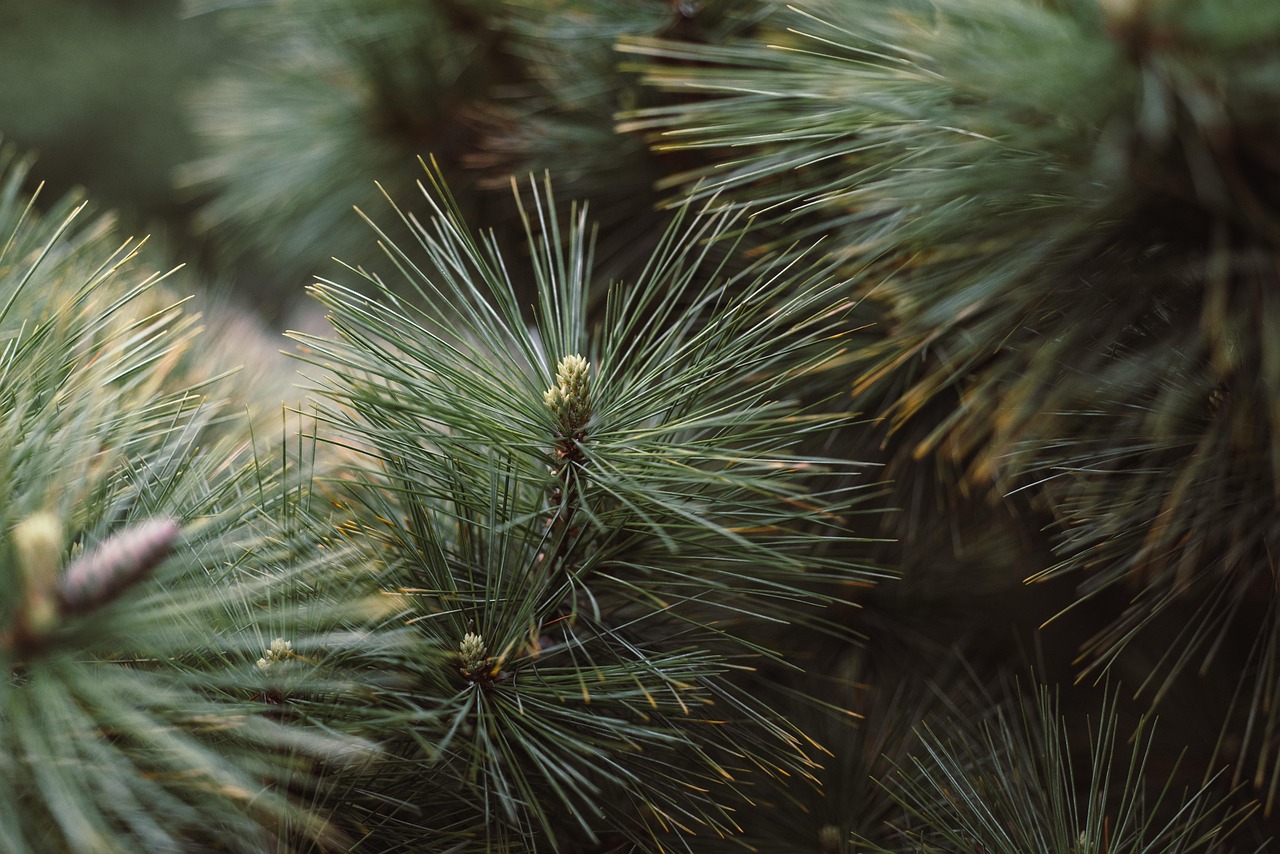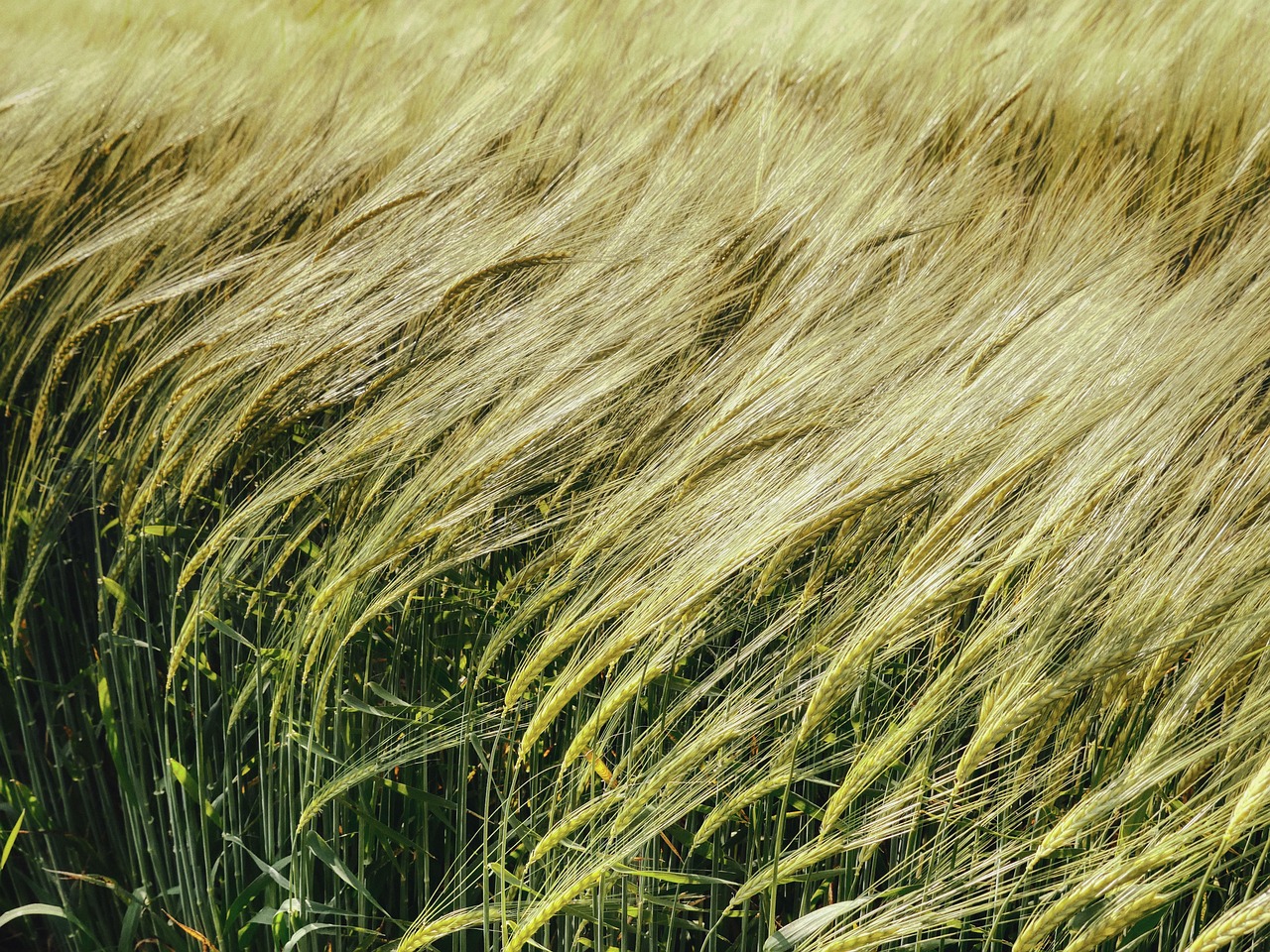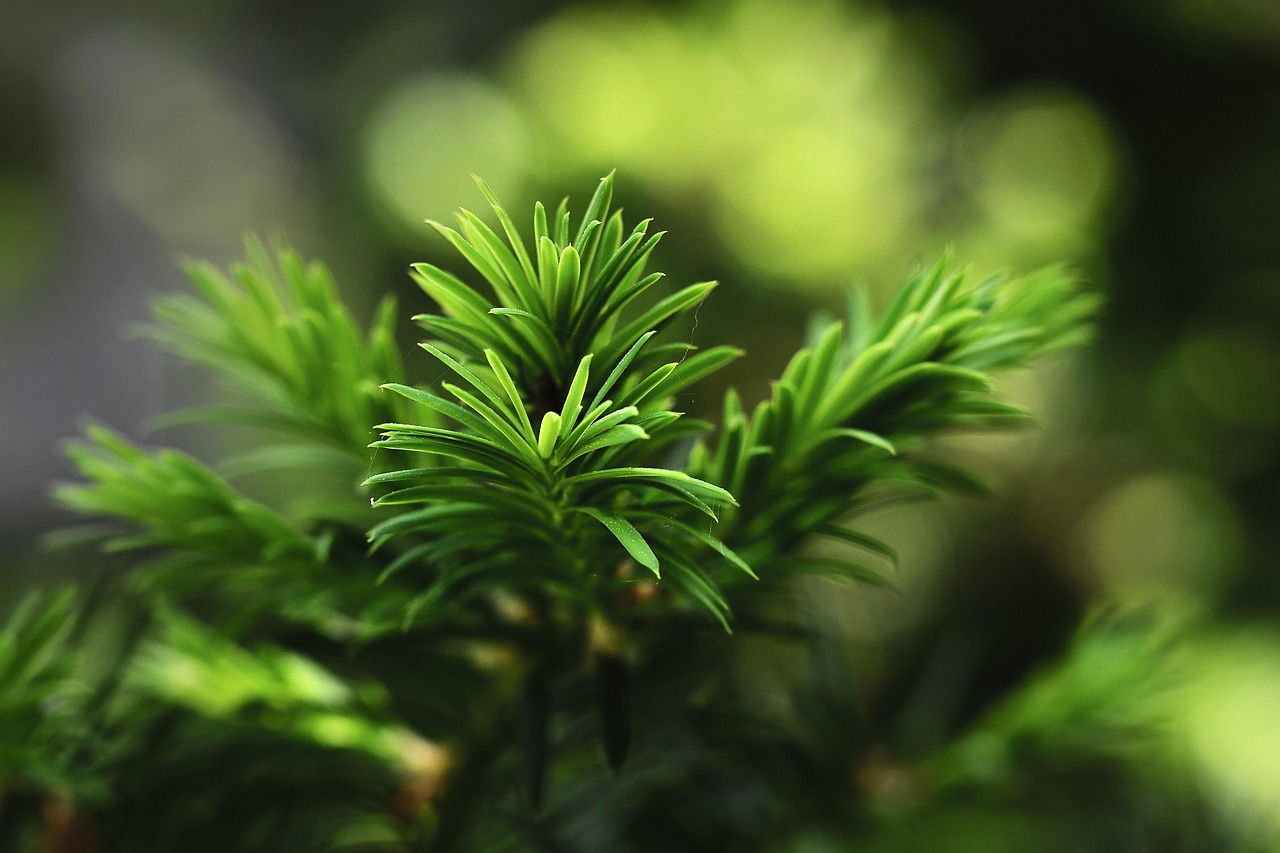Evergreen trees create a unique environment underneath their canopies. While many assume that little can thrive in such shaded spaces, various surprising plants flourish in these conditions. Understanding what grows under evergreens reveals the beauty and diversity of life that can exist in shaded gardens.
Evergreen trees, such as pines, spruces, and firs, retain their foliage year-round. This constant cover can create significant challenges for other plants due to reduced sunlight and increased competition for nutrients. However, many plants have adapted to these conditions. They have developed specific traits that enable them to survive and even thrive in the cool, damp shade provided by evergreens.

In general, plants that grow under evergreens tend to be shade-tolerant. They may have broader leaves to capture more light or deeper root systems that allow them to access water and nutrients more efficiently. Additionally, the mulch created by fallen evergreen needles can provide a nutrient-rich layer that benefits certain types of plants.
Plants Thriving Under Evergreens
There are several categories of plants that do well in the shade of evergreen trees. These can be classified into ground covers, flowering plants, and ferns. Each group offers unique characteristics and advantages for gardeners looking to enhance their landscapes.
Ground Covers
Ground cover plants are ideal for filling spaces beneath evergreens. They help prevent weeds and retain soil moisture. Some popular options include:
- Vinca minor (Periwinkle): This hardy plant features glossy leaves and beautiful blue flowers.
- Ajuga reptans (Bugleweed): With its attractive foliage and spikes of blue flowers, ajuga is both decorative and functional.
- Pachysandra terminalis (Japanese Spurge): This plant thrives in shade and spreads quickly, forming a lush green carpet.
Flowering Plants
While flowering plants may struggle more than ground covers, several species can still thrive under evergreens. These include:
- Helleborus niger (Christmas Rose): One of the first flowers to bloom in spring, it offers beautiful white blooms.
- Trillium: Known for its three-petaled flowers, trillium adds a touch of elegance in early spring.
- Epimedium (Barrenwort): This plant has delicate flowers and attractive foliage that lasts through seasons.
Ferns
Ferns are one of the best choices for shady spots under evergreens. They come in various shapes and sizes, adding texture to the landscape. Some notable varieties include:
- Polystichum acrostichoides (Christmas Fern): This evergreen fern provides year-round greenery.
- Athyrium filix-femina (Lady Fern): Known for its feathery fronds, lady fern adds softness to any garden.
- Dryopteris erythrosora (Autumn Fern): With coppery new growth, this fern offers visual interest throughout the seasons.
These plants not only survive but can enhance the beauty of gardens shaded by evergreen trees. By choosing the right species, gardeners can create vibrant spaces that thrive in conditions often deemed too harsh for most plants.
The key to success lies in understanding the specific needs of each plant type and providing the right care. With careful selection and attention, evergreens can serve as a stunning backdrop for a diverse array of flourishing plants.
Soil and Water Considerations Under Evergreens
When planning a garden beneath evergreen trees, understanding the soil and water conditions is crucial. The presence of evergreens can significantly affect the soil quality and moisture levels in the area directly beneath their canopy. This understanding helps in selecting suitable plants that will thrive in these specific conditions.
Soil Composition
The soil beneath evergreens often has a unique composition due to the accumulation of fallen needles and organic matter. Evergreen needles decompose slowly, contributing to a layer of acidic mulch. This can lead to:
- Acidic Soil: The pH level tends to be lower, which may not be suitable for all plants. Adjusting soil pH may be necessary for certain species.
- Nutrient Availability: While organic matter can enhance nutrient levels, some nutrients might become less available due to acidity.
- Drainage Issues: Heavy needle coverage can impede drainage, leading to moisture retention in some cases.
Water Needs
Evergreens can also impact the water availability in their vicinity. Their extensive root systems compete for moisture, often leaving the ground drier than surrounding areas. It is essential to consider the following when planning a garden:
- Watering Requirements: Many shade-tolerant plants need consistent moisture, especially during dry spells. Regular watering may be necessary to establish new plants.
- Mulching: Applying organic mulch can help retain soil moisture and regulate temperature, benefiting plants growing underneath.
- Root Competition: Some plants may struggle due to the competition for water and nutrients from evergreen roots. Selecting plants with shallow roots can mitigate this issue.
Companion Planting with Evergreens

Companion planting is an effective strategy for enhancing garden health and aesthetics under evergreens. By pairing compatible plants, gardeners can improve growth conditions and create a vibrant ecosystem. Here are some examples of beneficial companions for evergreens:
Compatible Plant Categories
Understanding which plants work well together can lead to a flourishing garden space. Here are categories of plants that complement evergreens:
- Shade-Tolerant Perennials: Plants like hostas and ferns pair well with evergreens, providing contrasting textures and colors while thriving in shade.
- Flowering Bulbs: Spring-flowering bulbs such as snowdrops and daffodils can add seasonal interest before the evergreen foliage fully develops.
- Herbs: Some herbs like mint and chives can grow well in partial shade, offering culinary benefits while providing ground cover.
Avoiding Incompatibilities
While many plants thrive under evergreens, some should be avoided due to their specific needs or potential negative interactions:

- Sun-Loving Plants: Avoid planting sun-loving flowers or shrubs that require full sunlight, as they will struggle in the shade.
- Aggressive Species: Be cautious with invasive plants that may outcompete desired species for resources.
By carefully selecting companion plants, gardeners can create a harmonious environment that maximizes the beauty and diversity of their shaded landscapes under evergreens.
Seasonal Considerations for Plants Under Evergreens

Gardening under evergreens requires an understanding of seasonal changes. The conditions change throughout the year, impacting plant growth and care. Considering these seasonal variations helps ensure a thriving garden space.
Spring Growth
As spring arrives, the garden beneath evergreens begins to awaken. New growth emerges from the plants that have survived the winter. During this period, gardeners should focus on:
- Fertilization: Applying a balanced, slow-release fertilizer can support the new growth of perennials and other plants.
- Watering: Ensure adequate moisture as plants begin to grow. Spring rains might not always suffice, so supplemental watering may be necessary.
- Weed Control: Early spring is prime time for weeds. Regularly check for and remove unwanted plants before they take hold.
Summer Care
During the summer months, the conditions under evergreens can become challenging due to heat and competition for water. To maintain a healthy garden, consider the following:
- Mulching: A layer of organic mulch helps retain soil moisture and keeps the roots cool, which is especially important in hot weather.
- Shade Management: Monitor how much sunlight different areas receive as tree foliage fills out. Some plants may need additional light or different positioning.
- Pest Management: Keep an eye out for pests and diseases that may thrive in warmer months. Early intervention can prevent larger infestations.
Autumn Preparation
As autumn approaches, preparation for winter becomes essential. The following steps can help ensure plants remain healthy through colder months:
- Pruning: Lightly prune any dead or damaged branches from perennials and shrubs to encourage healthy growth in the spring.
- Soil Testing: Conduct a soil test to determine nutrient levels and pH balance. This information can guide adjustments before winter.
- Protection from Frost: Consider using protective coverings or mulches to insulate sensitive plants against frost damage.
Winter Considerations
Winter presents unique challenges for gardens under evergreens. While some plants may rest, others can remain active even in cold weather:
- Snow Cover: A layer of snow can act as insulation, protecting plant roots from freezing temperatures.
- Water Needs: Even in winter, some plants may require occasional watering during dry spells when the ground is not frozen.
- Monitoring Conditions: Keep an eye on evergreen branches. Heavy snow or ice can cause them to droop, potentially damaging the plants below.
By understanding seasonal changes and implementing appropriate care strategies, gardeners can enhance the resilience and beauty of their shaded gardens throughout the year. Each season presents opportunities for growth and maintenance that contribute to a thriving ecosystem beneath evergreens.
Creating a Thriving Landscape Under Evergreens
Building a successful garden beneath evergreen trees involves careful planning and understanding of the unique ecosystem created by these trees. By selecting the right plants, considering soil and water needs, and managing seasonal changes, gardeners can establish a lush and vibrant undergrowth that complements the towering evergreens.
It is essential to be mindful of the environmental conditions specific to evergreen settings. The shade, moisture levels, and soil composition all play a critical role in determining which plants will thrive. By focusing on shade-tolerant varieties and understanding the interactions between plants, gardeners can create a harmonious balance.
Choosing the Right Plants
As previously discussed, various categories of plants, including ground covers, flowering perennials, and ferns, thrive in shaded areas under evergreens. Here are some additional considerations when selecting plants:
- Diversity: Incorporating a mix of plant types can enhance biodiversity and create a more resilient garden.
- Native Species: Opt for native plants when possible. They are often better adapted to local conditions and require less maintenance.
- Maintenance Requirements: Consider how much time and effort you can commit to maintenance. Some plants may require more care than others.
Enhancing Aesthetics
A garden under evergreens can be a stunning visual display. To enhance aesthetics, consider the following tips:
- Layering Plants: Use taller plants at the back and shorter ones at the front to create depth and interest.
- Color Contrast: Choose plants with varying foliage colors and textures to add visual appeal throughout different seasons.
- Seasonal Blooms: Select plants that bloom at different times of the year for continuous color and interest.
Final Thoughts
Gardening under evergreens may seem challenging at first, but with the right knowledge and planning, it can become a rewarding endeavor. The unique conditions under these trees support a variety of surprising plants that not only survive but thrive in shade. From vibrant ground covers to delicate ferns, there are numerous options available for creating an inviting and lush landscape.
By understanding soil composition, managing water needs, and considering seasonal shifts, gardeners can successfully cultivate a diverse array of flora beneath evergreens. The beauty of such gardens lies in their ability to adapt to changing conditions while providing a serene retreat for wildlife and people alike.
In conclusion, embracing the challenges and opportunities presented by evergreen settings can lead to stunning results. With thoughtful selection of compatible plants, careful maintenance, and attention to seasonal changes, anyone can create a thriving garden that enhances the beauty of their landscape while showcasing the surprising life that flourishes in the shade of evergreens.
